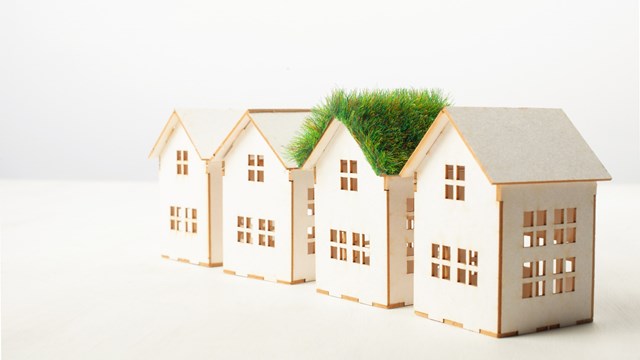
Still convinced you've got plant-killing "black thumbs?" No problem. The following is a list of plants you'd need a stake through the heart to destroy. Go ahead - do your worst. With these troopers you'll finally get the satisfaction of keeping plants alive and thriving. Who knows? You just might become a plant person after all.
Sansevieria The most famous member of the Sansevieria family is the
prosaically named Mother-in-Law's Tongue, with its tall, pointy, sword-shaped
leaves. But there are many other colorful varieties, and the whole clan is virtually
indestructible. Sansevierias like bright light with some sun, but can tolerate
shade also. They're drought-tolerant and rarely need repotting. Water them moderately
from spring through fall, allowing the soil to dry out somewhat between waterings.
In winter, water only every two months. Their Achilles heel: root rot due to
over-watering, especially in winter.Spider Plants (a.k.a. Chlorophytum) Spider plants are those grassy
bursts of arching leaves and tendrils you often see in hanging baskets. Mature
plants put out long, drooping shoots with mini spider plants on the ends. These
plantlets look great, but they can also be used to make the world's easiest
cuttings - simply snip them off, drop them into a bowl of water for two or three
weeks until they sprout roots, then pop them into a pot of soil. You'll be giving
away new plants to friends in no time. Spidies are happiest in well-lit spots,
but will endure nearly any lighting scenario. Likewise, they prefer heavy, frequent
watering from spring through fall, but can survive even the most delinquent
parenting. Due to their rapid growth habits, you may need to repot them once
every year or two.
Sweetheart Philodendrons (a.k.a. Philodendron scandens) The entire
philodendron family tends to be tenacious, but P. scandens is the undisputed
champ in the face of neglect. A bright green vine with heart-shaped leaves,
it will climb and trail nicely in a hanging basket. Indirect light is best,
but it can withstand even deep shade, and it loves moist air so much you might
consider parking it in the bathroom. Water heavily and frequently from spring
through fall, and keep the soil moist but not wet in winter. Propagate by cutting
off the tip of a vine (about 6-8-inches) and putting it in water until it roots.Cacti & Succulents Succulents sport thick, fleshy leaves, which
can store water. Cacti are one group of succulents; aloe and haworthia are some
other common succulents you might try. While it's true that these plants can
stand up to pretty relentless abuse, there are some myths we'd like to dispel.
Myth: Desert plants like it blazing hot and sunny all the time. Truth: Not all
succulents hail from the desert, and besides, the desert gets very cool at times - so
don't constantly bake your cacti. Myth: You should drown your succulents so
they can stockpile until the next time you remember to water. Truth: Succulents
can go for long stretches without water, but soggy roots are their kryptonite - and
good drainage is essential. Water thoroughly in spring and summer (with tepid
water), but never leave them in standing water for long - pour off whatever they
can't drink in 30 minutes. Water very sparingly in fall and winter.
Now go ahead and make their day.






Comments
Leave a Comment